I just can´t stop writing about my fascination for Les Sables d´Olonne, or, in a broader range, about the French Atlantic coast with its famous locations where the sailing heart of not just France but the world is beating: Lorient´s “La Base”, Les Sables and the Vendeé Globe or Bordeaux, to name just three of these. Like a rope of pearls. I could easily imagine a great vacation here, just driving from South to North, visiting all these places. Even after seven years of intensive travel in France, it´s a gift that keeps on giving.
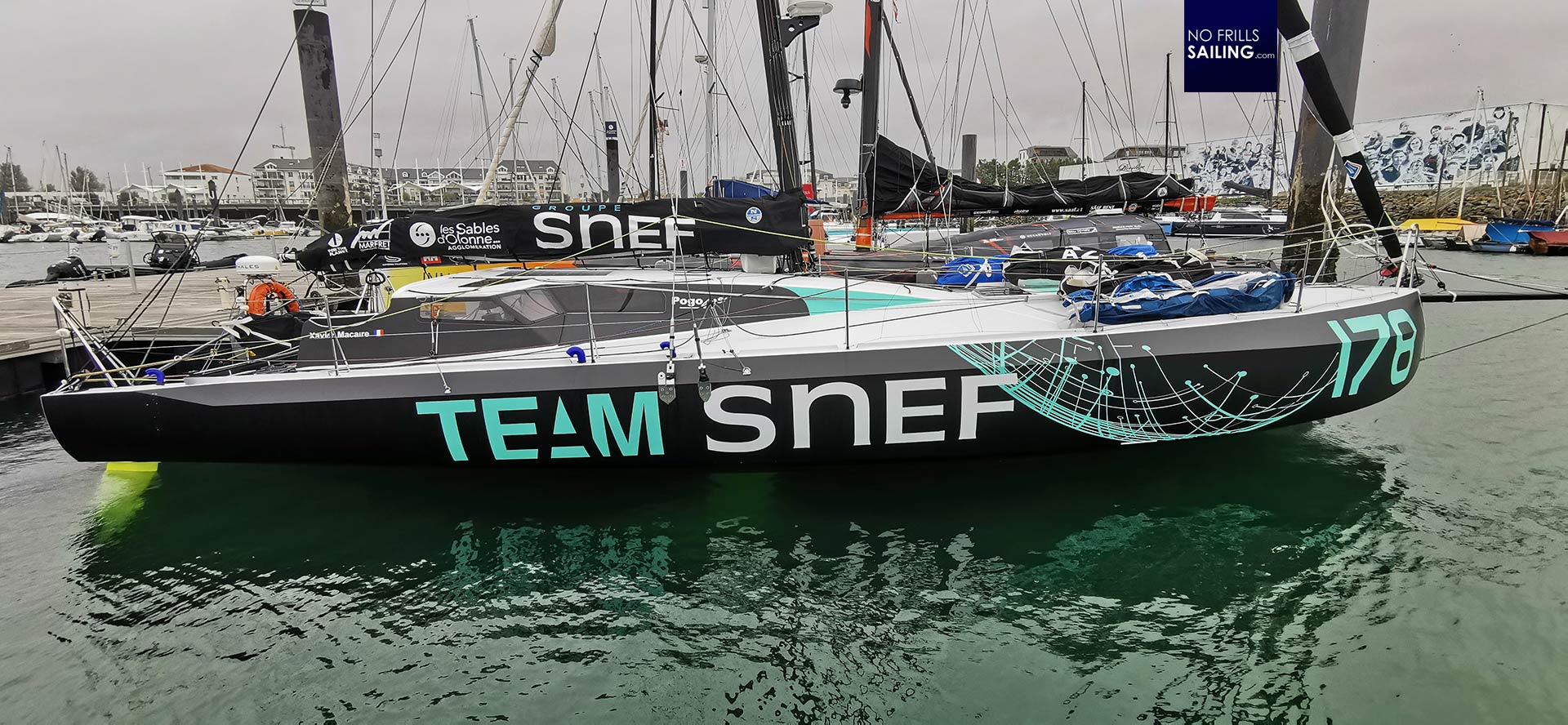
You may have read my last post from Les Sables about a Sparkman & Stephens classic I discovered there on dry stand by chance? This time, another new boat hit my eyes. Quite the opposite from what I wrote abut last time. Let´s say, it is the current pinnacle of Class 40 racing boats, the all new Pogo 40 S4. The boat is sailed by Xavier Macaire, a pro skipper, who – sadly – wasn´t aboard so that you, dear reader, will now just see the exteriors. Which, I´d say, is interesting enough to deserve an own article.
Scow bow is the new standard
Looking at this boat the eyes are immediately drawn towards the bow. Those latest generation racers are developed incorporating the newest principles of yacht design for planning boats and reaching-optimized racers. Just like in the Vector 3 Mini about which I write some weeks ago, this is the defining details of the new Pogo 40 S4.
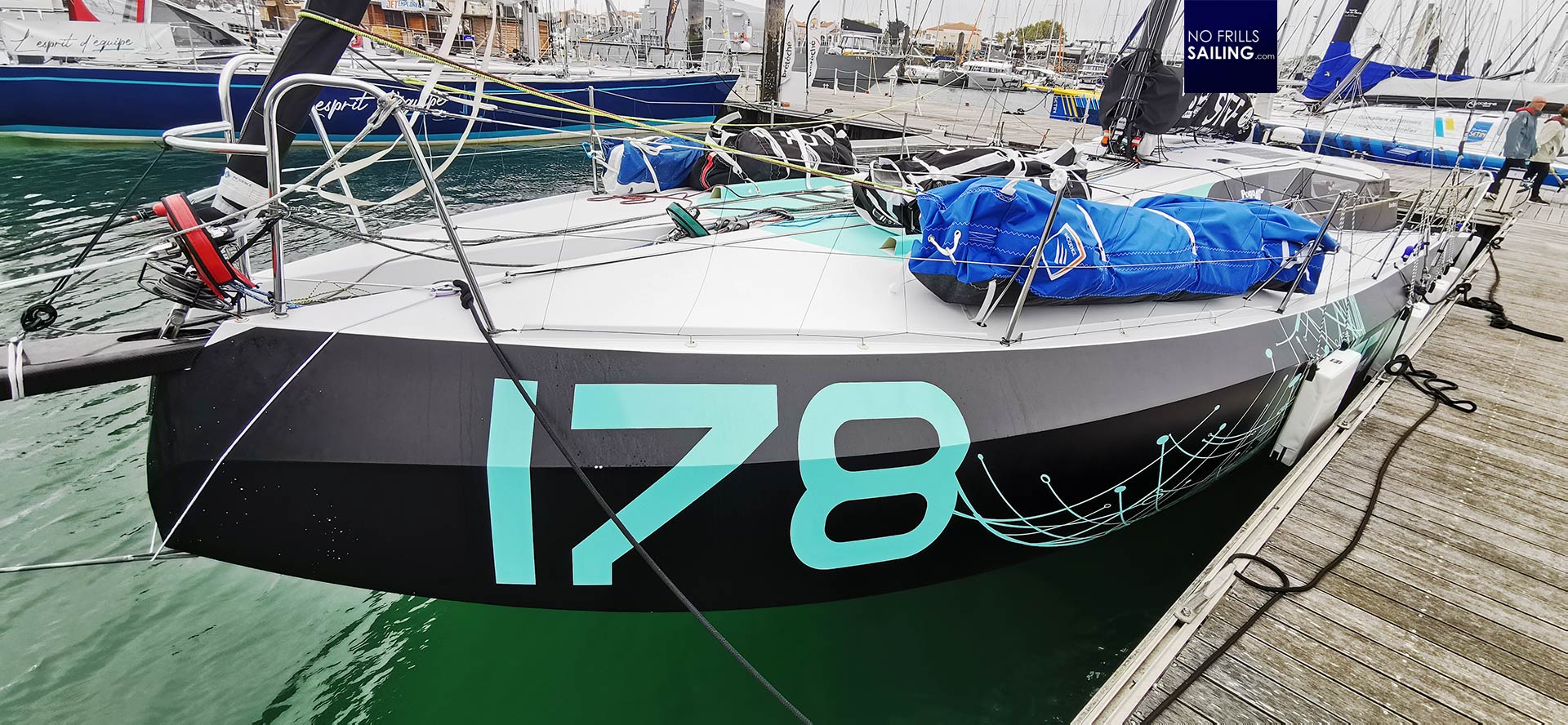
I remember very well my first offshore sailing experiences years ago which had been taken place aboard the grand-grandmother of Macaire´s racer: The Pogo 40. This was a more classic designed yacht, fine entry, slim stem. These times are long gone. The Pogo 40 S3 sported a wider bow already but this is a whole new level with the S4. The wide scow bow should optimize planning mode and prevent the boat from nosediving.
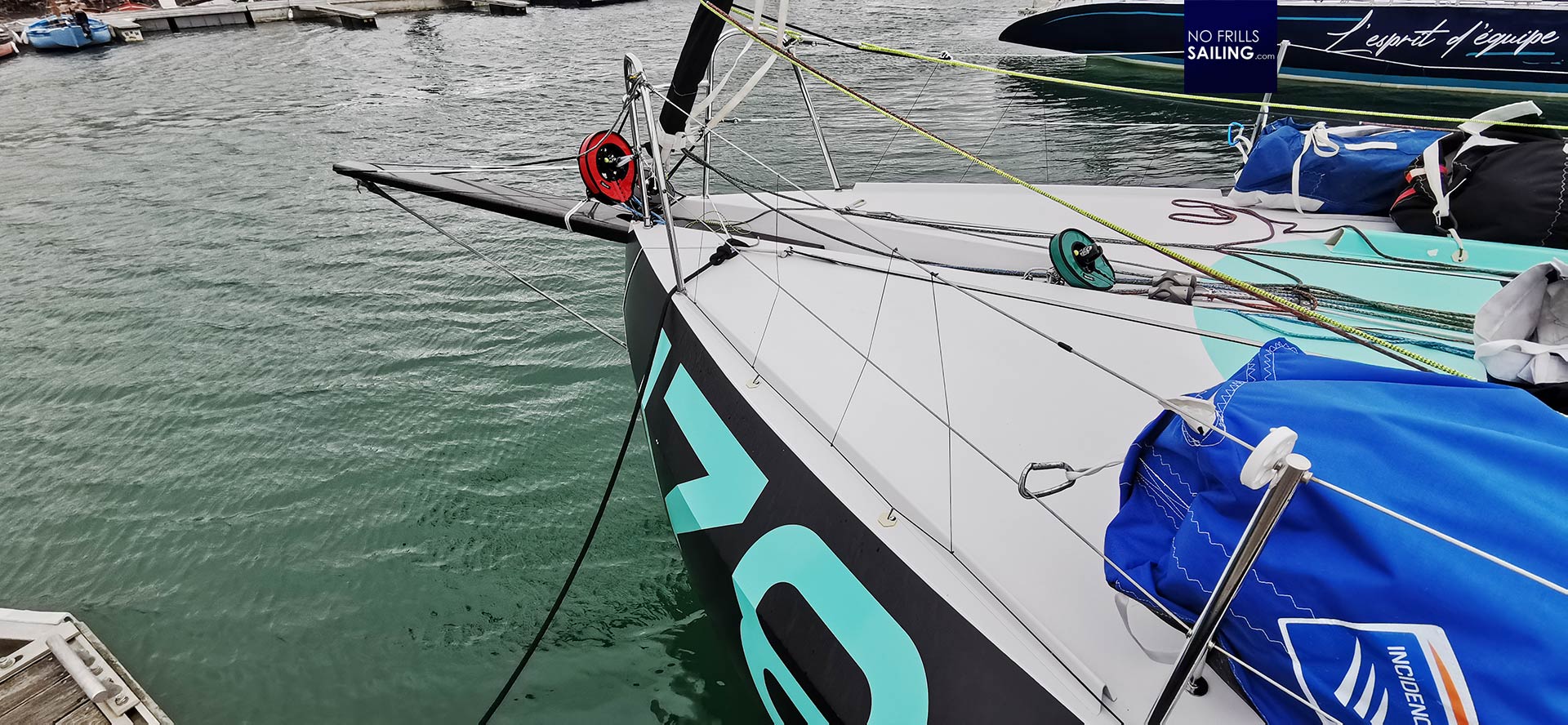
The Guillaume Verdier designed new Pogo S4 turns out to be a best-seller: Since its inauguration quite a number of Route du Rhum-skippers and Class 40-racers ordered one, with “our” German skipper Lennart Burke receiving his S4 only a few days ago. Standing on the pontoon of Les Sables, I can´t help myself but to admit that no matter how good and fast such a scow bowed-racer may sail, it is definitely not a beauty. Well, it doesn´t have to, I´d say.
A thoroughbred racer
Without question, these new Class 40 boats are best for what they are conceived: Reaching and running points of sail, racing downwind with all canvas brought to the wind. The usual suspects being said Route du Rhum or another circumnavigation attempt. Xavier Macaire is a typical French pro-skipper, as to say: With five Solitaire du Figaro races completed he switched to Class 40 recently, backed by his sponsor SNEF Groupe.
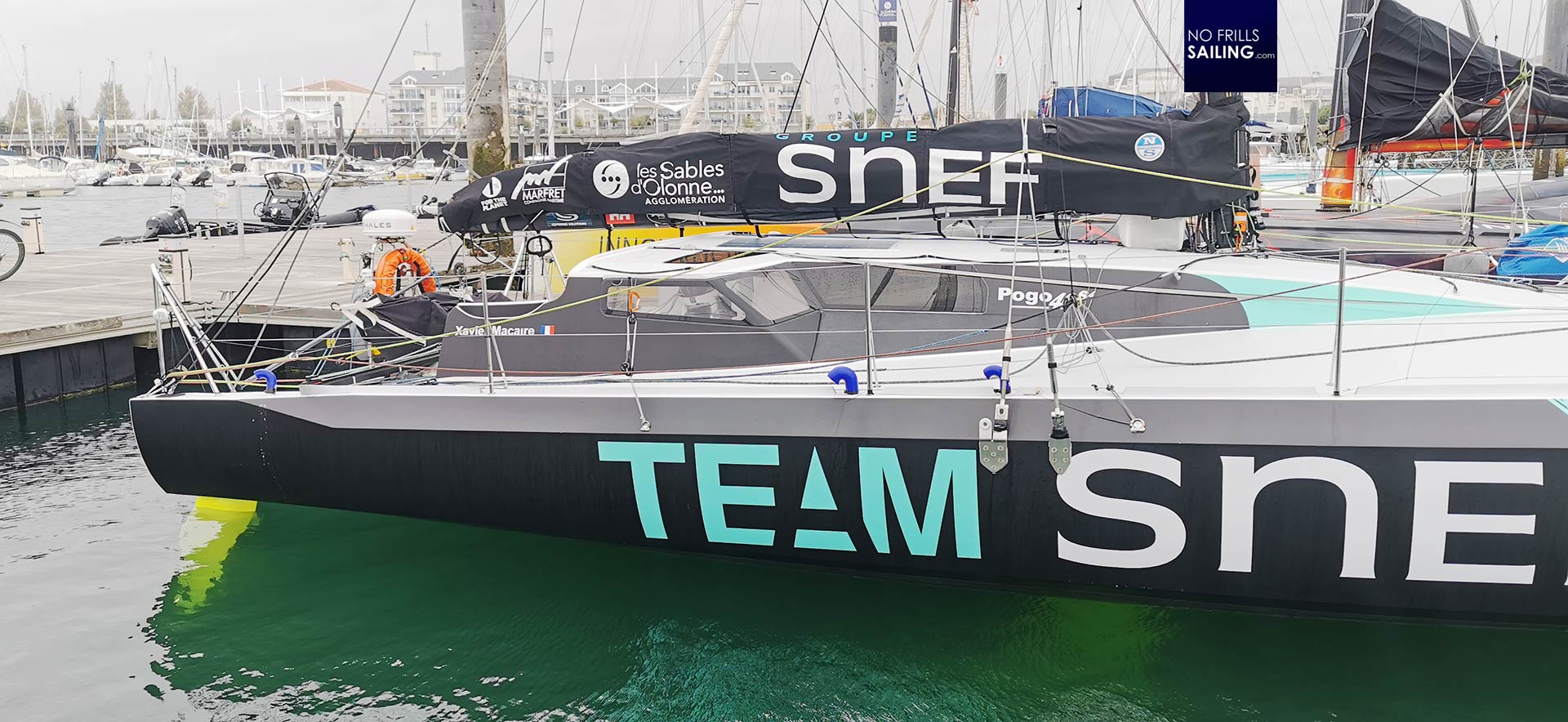
Now competing against his fellow sportsmen, every feet of his boat conveys speed. Compared to the old Pogo 40 or even an Akilaria, the new S4 looks even more “closed”, the dodger shielding the skippers off against the ice cold spray in foul conditions, slim windows allow for brief sights over the bow. At speeds in excess of 20 knots this is of course much better. Thinking back to my sailing experience on the Pogo 40, the cockpit appears to be “Mediterranean” compared to this tank …
Skipper´s workplace ergonomics
Although nobody was aboard which sadly prevented me from taking a look inside, I got a pretty clear sight into the very workplace of Xavier Macaire which is the cockpit of the Pogo 40 S4. The longer I looked the better I understood the ergonomics of the running rigging and the locations of the trimming lines of the boat. Basically, the S4 is controlled via a central winch and main “piano” of the most used lines. This winch is – not unlike some IMOCA 6ß racing yachts – located directly underneath the dodger at the longitudinal axis of the boat. Mostly main sail and lines tot he mast are located here.
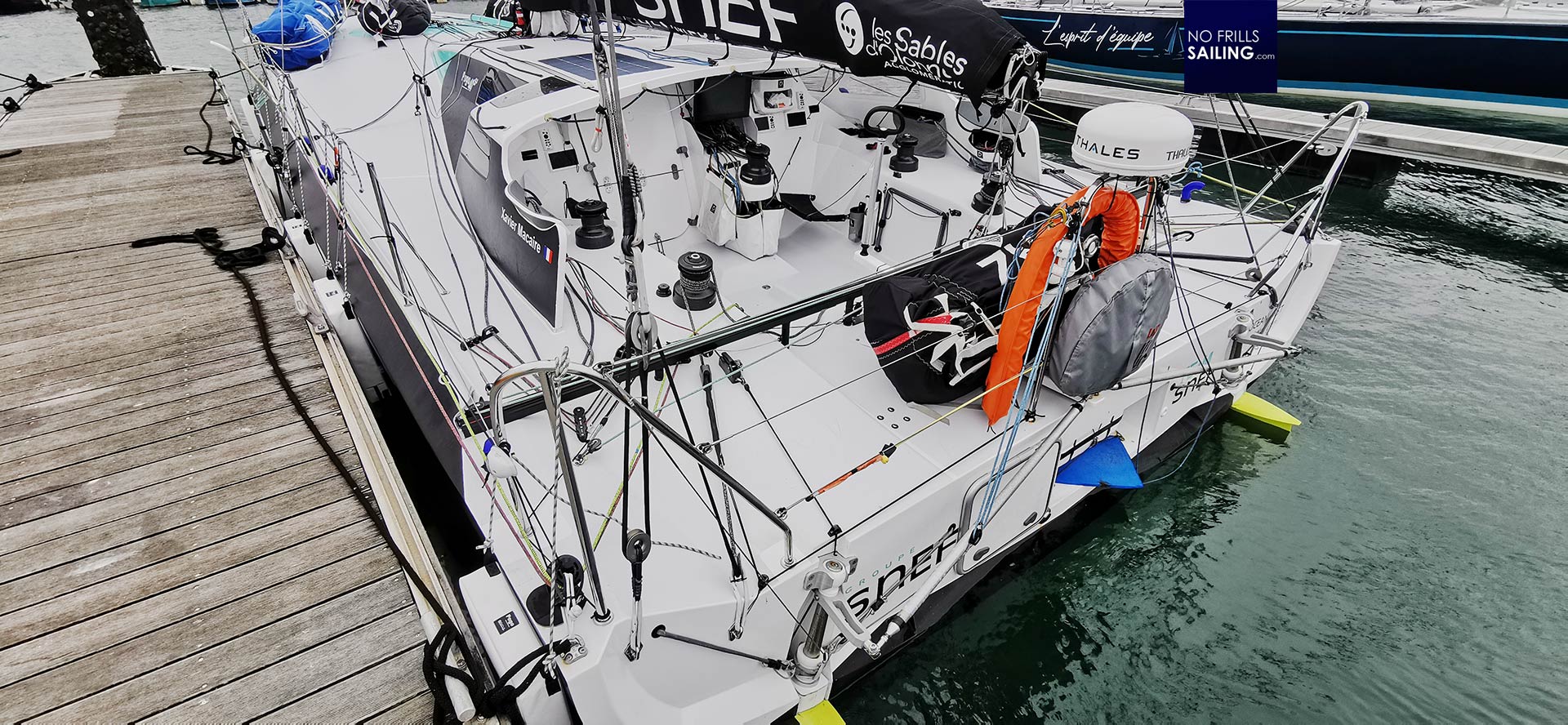
I like the almost brutal appearing mainsheet taveller which is just bolted into the coamings at the rear end of the cockpit. No bend in it, no nice fittings, just the big bare rail. Just forward of it the skipper has two fore sail winches for Jib/Genoa and light wind sails. Many more trim lines arrive at the cockpit, which is the more amazing the more one looks.
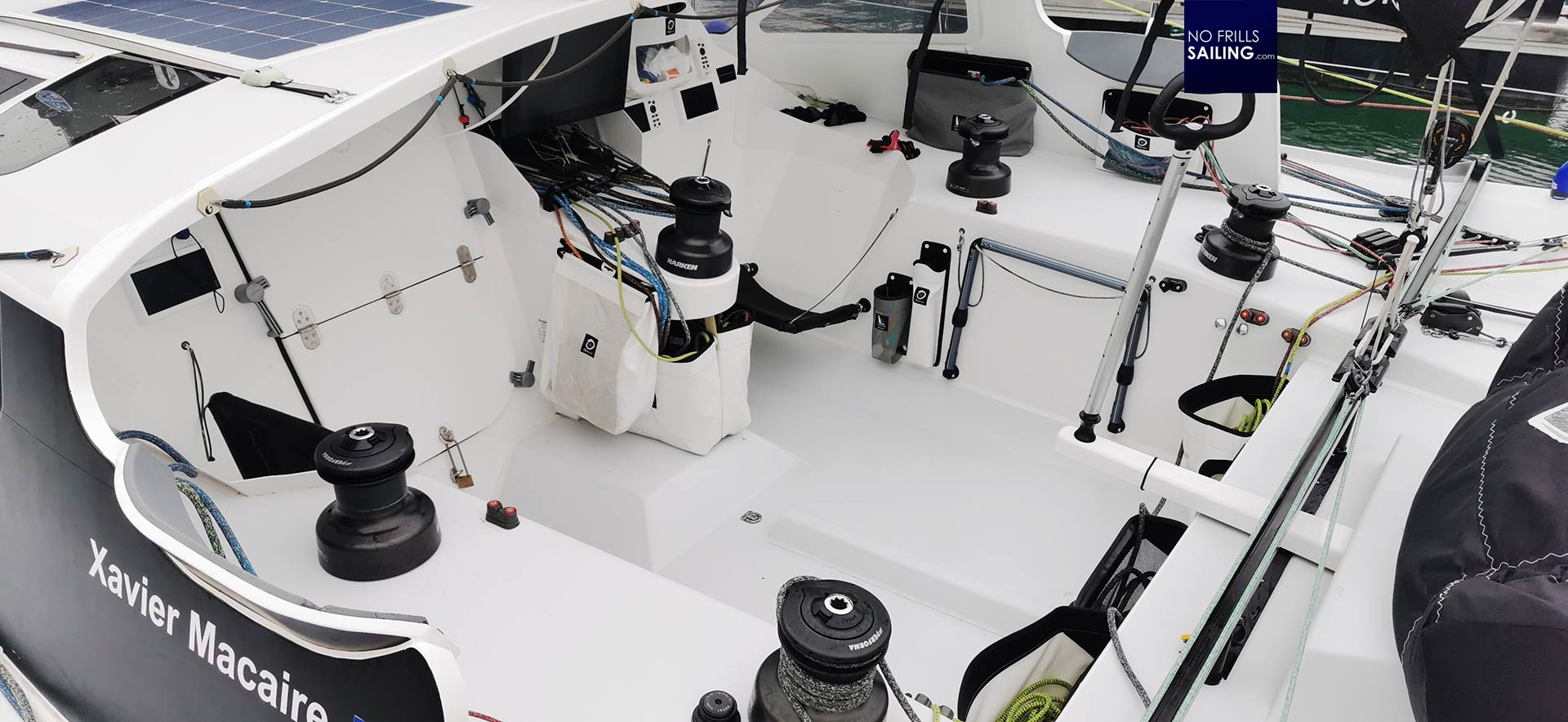
Although a Class 40 boat is, well, 40 feet long and therefore a big boat I´d say, this one is clearly not made to be sailed by a bigger crew than two. With a width of 4.42 meters, the cockpit is surprisingly small. Everything is made and optimized for single handed sailing. Just like the cockpits of CC-cruisers or Hallberg-Rassy yachts, this may come as a safety precaution and a strict form follows function-approach.
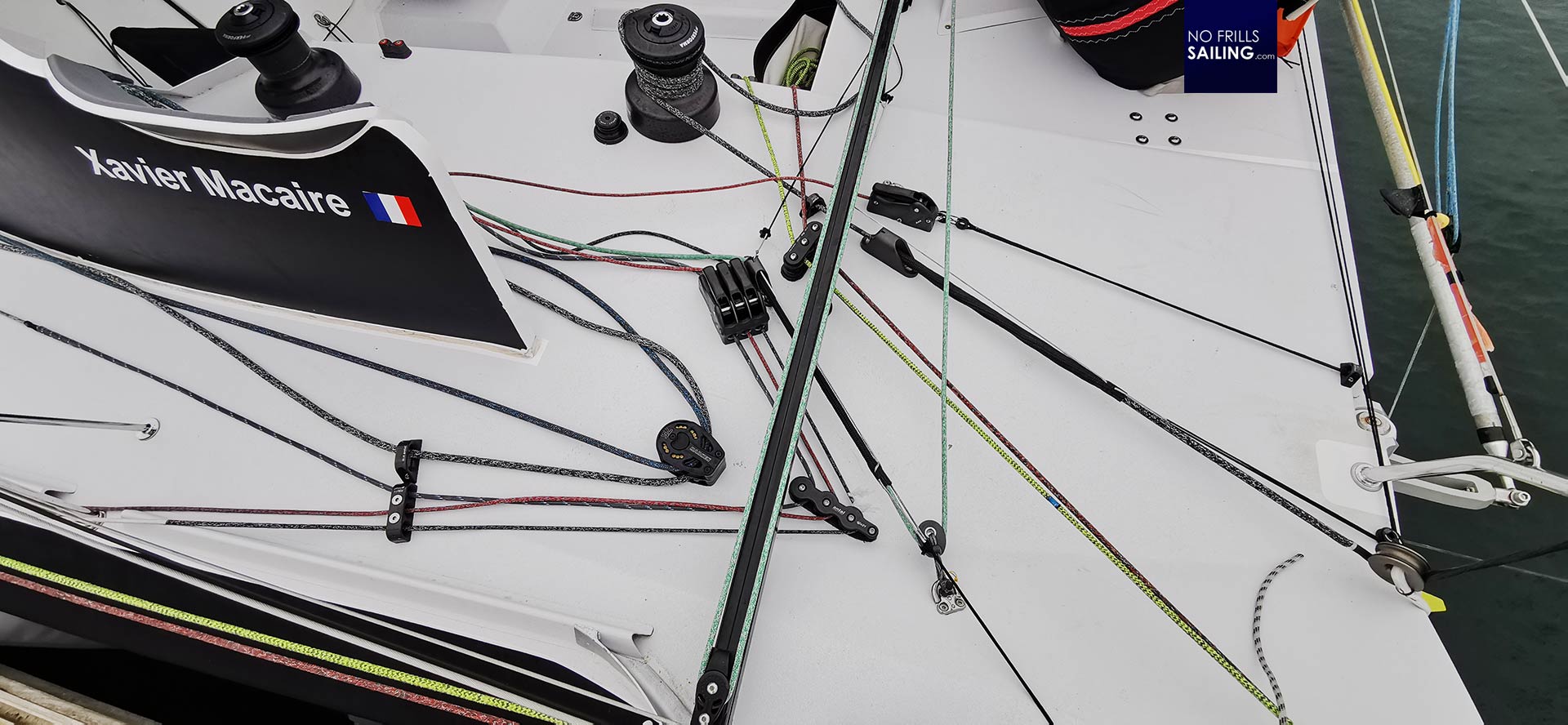
The palette of trim lines aboard the S4 is overwhelming. Whilst I was able to identify most of them, for some I just couldn´t figure out what they are meant to do. Clearly it takes some time to get accustomed to sailing one of these boats safely, let alone at flank speed over days and nights! Everybody who has even the remotest idea of what a storm at sea, massive waves and high wind speeds are like must acknowledge that this boat in such a hostile environment must be sailed by the best and the best only!
Next stop: Route du Rhum
For Xavier Macaire, this I could read on the internet later, next occasion after practicing with his new S4 will be the Route du Rhum which will start at the 6th of November. Only two weeks to go for him and his fellow seamen to prepare for such a big downwind adventure. It is estimated that the fastest boats will be arriving at Guadeloupe only 5 days later, which is absolutely stunning considering the fact that it took me aboard a 46 feet cruising yacht full 4 days to sail from Lisbon to Madeira, which is only a fraction from the Route du Rhum distance!
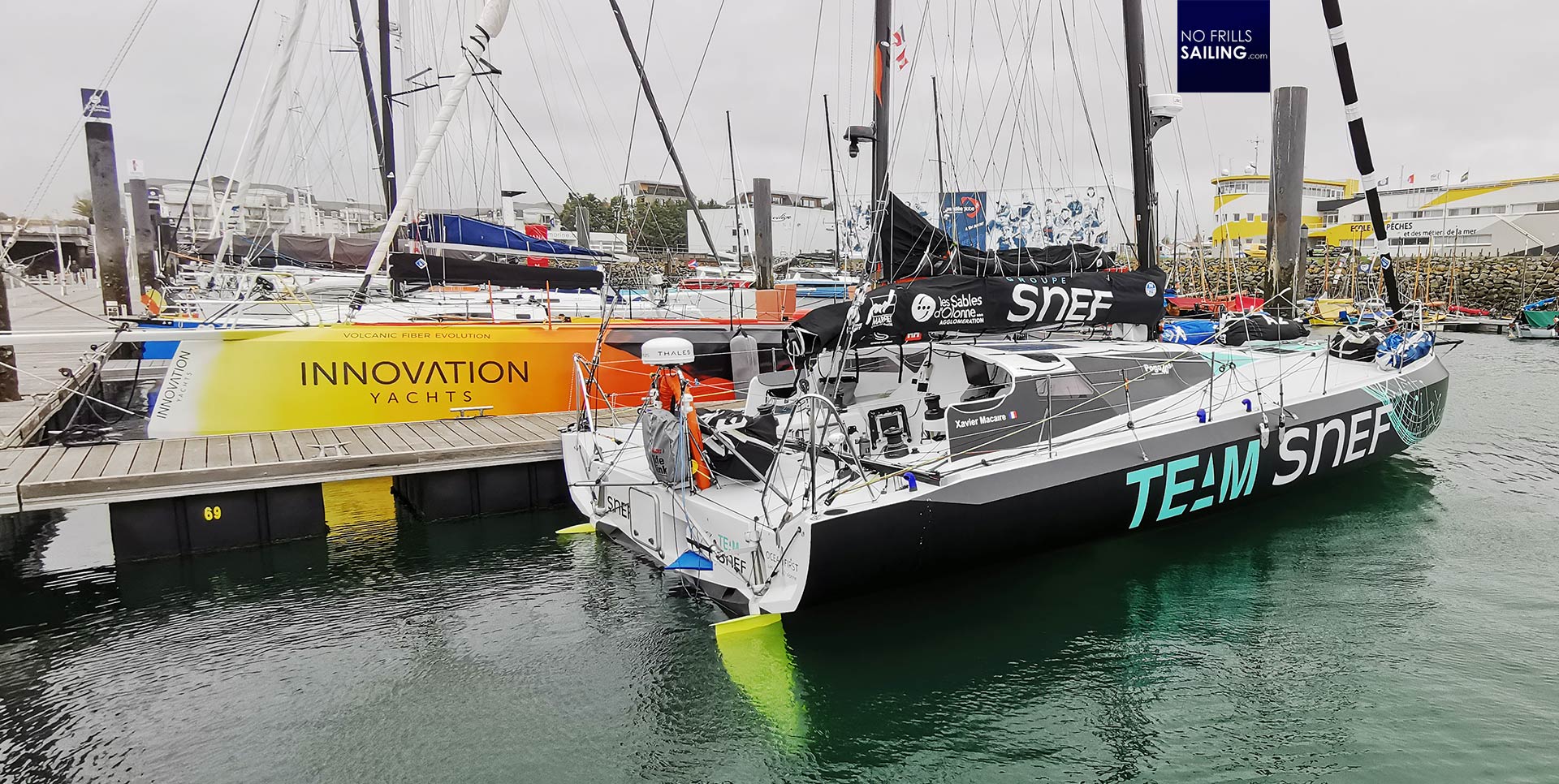
Xavier, of whom I read some interviews in advance, said on one occasion that it took him 3 years to learn how to really master his Figaro racing yacht. With this very humble and sympathetic approach he will let take himself the time needed to get to know this new racing machine fully. I wish him a safe, fast and fun journey to the Caribbean. Thanks, Les Sables, for showing me another so much interesting sailboat!
You might as well like to rad these Class 40-related articles:
Henrik Masekowitz and his Akilaria RC2
Gennaker-Training with Pogo 40
Merfyn Owen, Marc Lombard and Britton Ward on the Class 40
